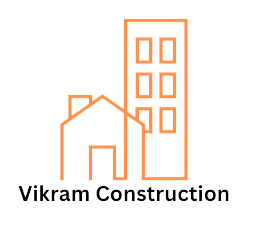
In a time when environmental issues are more important than ever, the building sector is at a crucial turning point. Building a cleaner future is a challenge for construction professionals as sustainability and eco-conscious techniques gain traction. We’ll delve into the techniques, supplies, and innovations that are transforming the construction industry in this blog, all the while keeping in mind the long-term advantages that sustainable building offers to the environment.
Although the idea of sustainability in building is not new, it has changed dramatically over time. The days of designing buildings only with practicality and beauty are long gone. These days, they also include protecting the environment and saving resources for upcoming generations.
The use of environmentally friendly materials is one of the most important components of sustainable construction. Because of their production processes, traditional building materials with a high carbon footprint include steel and concrete. But new materials, such recycled materials and engineered wood products, have emerged as a result of advances in material science. These improve the energy efficiency of the structures they develop while also lessening their negative effects on the environment.
Particularly wood is returning as a sustainable building resource. Cross-laminated timber (CLT), one type of engineered wood product, is strong and long-lasting enough to replace traditional materials in many applications. Wood is an eco-friendly material because sustainable forestry techniques guarantee a steady supply of wood. Additionally, wooden buildings have the ability to sequester carbon, which lowers the amount of greenhouse gasses in the environment.
However, sustainable building goes beyond just selecting eco-friendly building materials—it also encompasses eco-friendly building methods. Because they are more efficient and produce less waste, prefabrication and modular building methods are becoming more and more common. In order to minimize environmental disturbance and lower emissions associated with construction, building components are made off-site and assembled on-site. This method can also expedite project schedules, resulting in cost savings and expedites occupancy.
Another essential component of sustainable construction is the utilization of renewable energy sources. Eco-friendly buildings are increasingly featuring solar panels, wind turbines, and geothermal systems as essential elements. These technologies produce clean, renewable energy, which lowers a building’s carbon footprint while also saving money over the long run. Greenhouse gas emissions can be further reduced by selling excess energy that certain creative designs enable back to the grid.
A key tactic for attaining energy efficiency is the incorporation of passive design concepts. Using natural resources like wind, sunlight, and thermal mass, this method preserves cozy interior spaces without using a lot of energy. An excellent insulation system, strategically positioned windows, and proper orientation all contribute to a building’s increased energy efficiency. A building’s thermal performance can be further improved by adding living walls and green roofs, which also give residents access to green areas.
Another essential element of sustainable building is water conservation. Rainwater harvesting technologies, low-flow fixtures, and effective watering techniques all contribute to less water usage in buildings and landscapes. Reusing water resources responsibly is made possible by wastewater treatment technology like greywater recycling. Construction projects can lessen their impact on nearby water supplies and promote sustainability overall by putting these methods into practice.
The environmental impact of transportation must be taken into account by building experts in order to fully embrace sustainability. Using resources that are supplied locally boosts the local economy and lowers emissions related to long-distance transportation. Using energy-efficient, clean cars and equipment during building can also help to lower the project’s carbon footprint.
The management of waste is essential to sustainable building practices. Reusing and recycling materials during the development and demolition stages can help projects drastically cut down on the quantity of garbage that ends up in landfills. By putting into practice efficient waste management techniques, building projects can lessen their negative environmental effects while simultaneously conserving resources.
Sustainable building practices cover the whole lifecycle of the structure, not only the building itself. This entails thinking about how a structure can be modified, repurposed, or dismantled as its useful life is coming to an end. By encouraging material recovery and recycling, designing for deconstruction lessens the load on landfills. Reusing existing structures in an adaptive manner also lessens the need for new building, which saves even more resources.
Sustainable construction is greatly aided by green building certifications like LEED (Leadership in Energy and Environmental Design). An assessment and recognition framework for ecologically friendly building methods is offered by these certificates. Building industry experts can show their dedication to sustainability and draw in eco-aware clientele by meeting the requirements specified in these certifications.
In addition to being good for the environment, sustainable building techniques are also profitable. Since they use less energy, energy-efficient buildings frequently have lower running costs. Incentives, tax breaks, and rebates are also frequently provided by governments and municipalities to promote sustainable building, which raises the projects’ return on investment even more.
In conclusion, minimizing environmental effect through the use of sustainable materials, construction techniques, and technology is a multidimensional activity that is known as sustainable construction. Sustainability must be embraced and promoted by the building sector as the world struggles with resource shortages and climate change. Building occupants can enjoy greater quality of life and financial benefits in addition to lower carbon emissions and resource conservation when sustainable construction methods are used. Responsible decisions made in the building business pave the way for a more environmentally friendly future. Construction professionals have the ability to create a more sustainable and optimistic future for everyone by pursuing innovation and adhering to sustainable standards.
